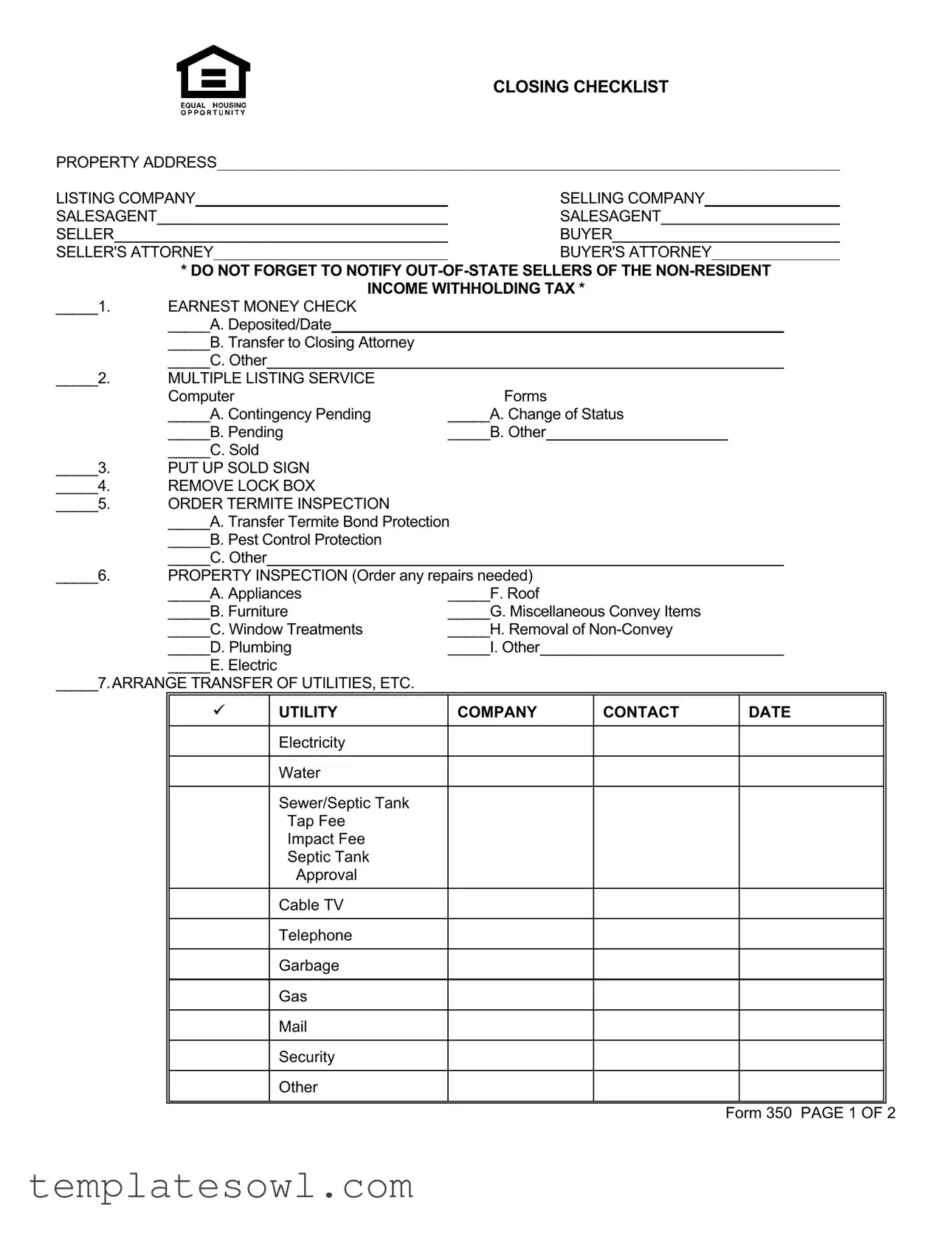What is the purpose of the Real Estate Closing Checklist?
The Real Estate Closing Checklist is designed to help both buyers and sellers ensure that all necessary steps have been completed before finalizing the transaction. It includes tasks like ordering inspections, preparing deeds, and transferring utilities, creating a smoother closing experience for everyone involved.
Who should use the Real Estate Closing Checklist?
This checklist should be used by real estate agents, buyers, sellers, and their attorneys. Each party plays a role during the closing process, and utilizing this checklist promotes accountability and ensures that no important tasks are overlooked.
What items are included in the checklist?
The checklist covers a wide range of items, such as handling earnest money, ordering inspections, notifying homeowner associations, and reviewing the sales contract. Each section is itemized to allow for easy completion and tracking of all required tasks.
How do I handle earnest money according to the checklist?
Earnest money is a crucial part of home buying. You should deposit the earnest money check promptly and notify the closing attorney about any transfers related to it. The checklist provides space to document dates and other relevant information concerning the earnest money.
What should I do if I am buying a condominium?
For condominium purchases, specific tasks pertain to homeowners associations. You will need to notify the association, ensure the transfer of names and addresses, manage any outstanding balances, and handle prorated rents. The checklist outlines these steps to ensure everything is in order before closing.
Is there a section for utility transfers?
Yes, there is a dedicated section for arranging the transfer of utilities. It includes space to note utility company contacts and set dates for the transfer of services such as electricity, water, and gas. This ensures all necessary accounts are in the buyer's name at the time of closing.
What is the importance of reviewing the closing statement?
Reviewing the closing statement is vital for both buyers and sellers. It helps confirm that all financial details, including repairs, adjustments, and prorated rents, are accurate. The checklist encourages a thorough review to avoid any surprises on closing day.
What should I do after the closing?
After closing, sending thank you letters to both the buyer and seller is recommended. Maintaining good relations can facilitate future communication or referrals. Additionally, ensure all funds are disbursed to the correct parties to finalize the transaction properly.


